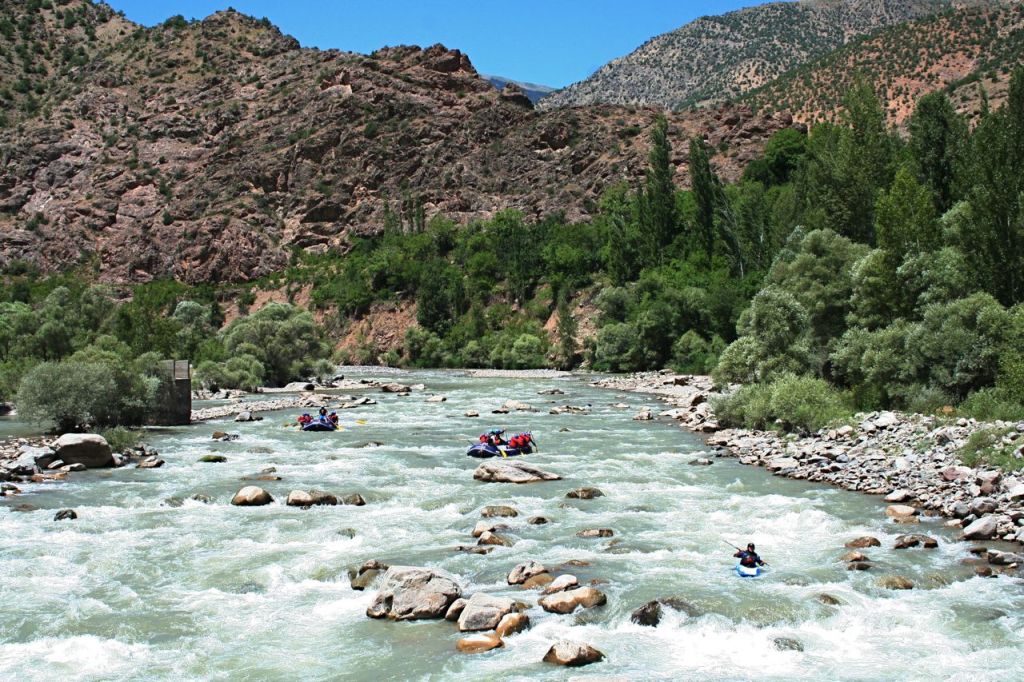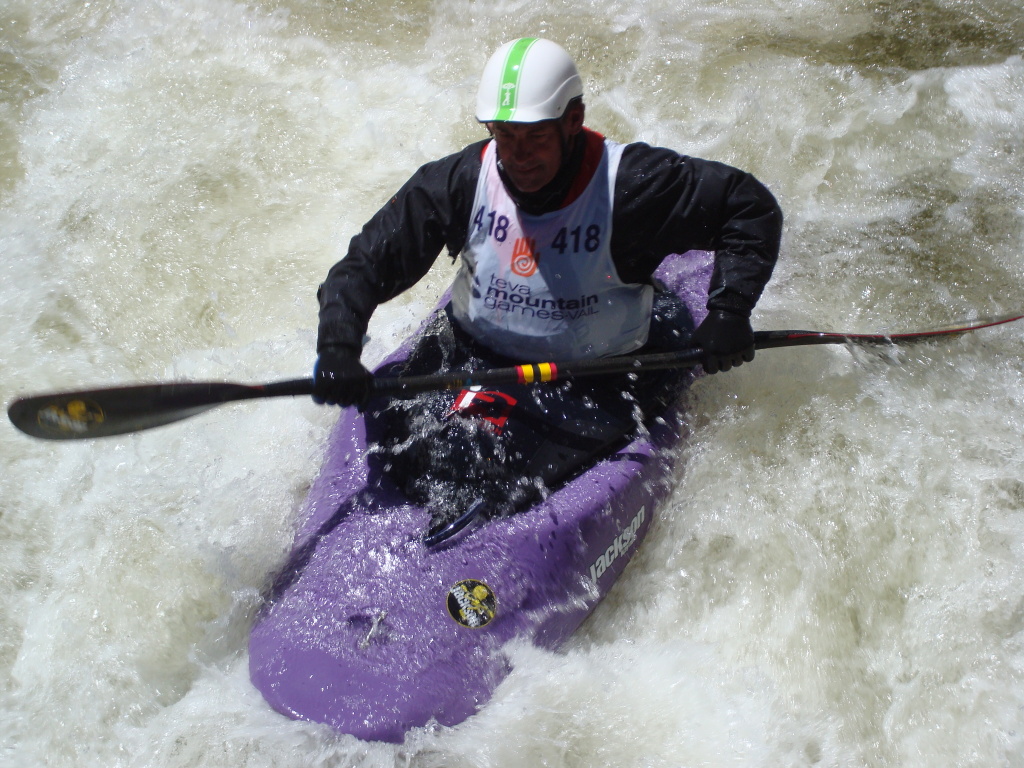Having spent my college years as an avid whitewater kayaker and rafter, I considered myself to be reasonably skilled in river safety and self-rescue techniques. My trip leaders were never negligent. We learned to avoid strainers or objects in the river, look for undercuts, wet exit from our kayaks, and avoid standing up in the river. Furthermore, if swimming, we learned to stay on our backs with our feet pointed downstream.
So when I started the Swiftwater Safety Institute Rescue Training with local firefighters and EMTs, I anticipated that the self-rescue portion would be primarily a review. But, to my surprise, the course equipped me with additional whitewater safety skills and techniques, which would have helped my fellow river runners and me.
1. You Can Do More Than Just Put Your Feet Up
The correct self-rescue position of lying flat on your back with your feet raised and pointed downstream is not the most natural swimming position. Even so, you can control your movements in moderate current by kicking your legs and doing a modified backstroke. In a modified backstroke, the arms stroke from the side in a circular motion while fully extended. This movement is unlike a regular backstroke where your arms are positioned over the head.
If you point your head towards the shore that you wish to reach, the current will help to carry you towards that shore. By using a combination of the current’s power and your strokes, you will have a better chance of reaching the shore. Remember to keep your feet downstream so that you can kick off from rocks as you approach them. Also, consider wearing gloves, not just for warmth, but to protect your hands if you need to grab onto a rock.
2. You Can Overcome Some Strainers
As a kayaker, I was always taught that as part of river safety, strainers were something to “just avoid.” Strainers are objects in the river, such as trees that allow the passage of some water underneath but will impede or trap a boat or swimmer. I knew that if I were in the water and came upon a strainer, the current would pull me under and pin me to it. In this case, I would have to hope someone would rescue me quickly, or else I would drown.
It turns out that there is a technique for passing over strainers if you are swimming. However, the method has some limitations. The strainer can not be obstructions sticking out from the top (such as limbs) that would impede your body. Also, the top of the strainer must be relatively close to the surface of the water. Remember that you only get one shot at getting over a strainer.
You’ll always want to avoid strainers. But, if you come upon one, the first step in passing over it is to flip from the rescue position onto your stomach. Swim as hard and fast as you can towards the strainer, kicking your feet. You want your body to be perpendicular to the strainer. When you come to it, continue to kick and quickly reach over the top of the strainer with your arms. Use both hands to push yourself forward, passing up and over the strainer.
Remember to keep kicking with your feet near the surface. If you allow your legs to be sucked down by the current, it will be challenging to raise them again and overcome the strainer. This technique only works in relatively deep water where you can swim on your stomach.
3. Avoid Low Head Dams
Low head dams – small, human-made dams across rivers – are dangerous for many reasons. First, they are often tricky to spot from upstream. The main clue that you are approaching a low head dam is that the water will suddenly drop off. Low head dams can catch people and objects in their hydraulic. The hydraulic is where water comes down off the dam, then goes downstream of the dam near the river bed, then rises and circulates upstream back to the base of the dam.
A person caught in a low head dam will find it challenging to swim downstream. The dam will move their body down and up in the circular pattern of the water. Well-meaning rescuers that approach the dam, both swimming and in vessels, can also be sucked into the hydraulic.
The best approach if someone is trapped in the water by a low head dam is to extend a rigid object for them to grab onto to pull him or her out. Ideally, several people would assist with pulling the victim to shore. Otherwise, the power of the hydraulic can pull a solo rescuer into the water.
4. Watch For Hypothermia
Even on hot summer days, river water is often significantly colder than body temperature. The most straightforward cure for hypothermia is prevention. For example, for first-timers, river safety and avoiding hypothermia could mean wearing the right clothing for your trip and pro-actively monitoring you and your companions’ comfort levels.
Watch for signs of mild hypothermia such as shivering, mumbling, and loss of fine motor coordination. Pay special attention to boaters who have been in the water. To treat a mild case of hypothermia, you can gradually warm the person’s core and limit further exposure to the cold. In severe cases of hypothermia, the patient will stop shivering, and his or her pulse and respiratory rate will slow. Moderate and severe hypothermia is a medical emergency, and you should get help as quickly as possible.
Final Thoughts
Even though I formally learned these techniques in safety training, the course instructors continually acknowledged their debt to the whitewater raft guides and kayakers who developed many rescue systems and procedures.
The training that I attended covered far more than the four points discussed in this article. The full course covered skills ranging from the use of throw bags, rope riggings, and rescue swimming. If you want to learn more and become comfortable with rescue techniques, groups such as the American Canoe Organization offer Swiftwater rescue courses of different lengths and levels to the public.
What other techniques were you surprised to learn about river safety? Have you taken any classes from Swiftwater? Let us know in the comments below!
Read Next:
Top 5: World’s Best Rivers For Whitewater Rafting
Rafting: First-Timer’s Guide
Article updated April 2020 to include formatting changes and additional links




Leave a Comment